|
|
Yaroslav de Tver o Yaroslav Yaroslávich ( 1220- 1271) (en ruso, Ярослав Ярославич) fue el primer príncipe de Tver y el décimo Gran príncipe de Vladímir desde 1264 a 1271. Yaroslav y su hijo Miguel Yaroslávich gobernaron durante la transformación de Tver de un pueblo en uno de los más grandes centros de poder de la Rusia medieval. Todos los siguientes duques de Tver descendieron de Yaroslav Yaroslávich.
Xenia of Tarusa ( Russian: Ксения Тарусская) ( c. 1246 - 1312), also known as Kseniya Yurievna ( Russian: Ксения Юрьевна), was a Princess consort of Tver and Grand Princess consort of Vladimir from 1267 to 1271. She is counted among the saints of the Russian Orthodox Church.
Xenia of Tarusa was a daughter of Youri Mikhailovich, Prince of Tarusa,

Stephen I Kotromanić (Bosnian: Stjepan Kotromanić/Стјепан Котроманић) (1242–1314) was a Bosnian Ban from 1287 to 1290 jointly with Ban Prijezda II and 1290–1314 alone as a vassal of the Kingdom of Hungary. He is the eponymous founder of the Bosnian ruling dynasty, the House of Kotromanić. Since 1287, when his father, Ban Prijezda I withdrew from power, Kotroman ruled jointly as Ban of Bosnia with another son of Prijezda I, Prijezda II. Kotroman separated the country with Prijezda II, and took eastern Bosnia. After the death of Prijezda II, Kotroman became the sole Ban of Bosnia in 1290.
Hugh Stafford est le deuxième fils du comte Ralph Stafford, issu de son second mariage avec Margaret, la fille du comte de Gloucester Hugh Audley. Il devient l'héritier de son père après la mort prématurée de son frère aînée Ralph, survenue vers 1347.
Dionisio I de Portugal (Dinis en portugués), apodado el Labrador (Lisboa, 9 de octubre de 1261 - Santarém, 7 de enero de1325). Hijo del rey Alfonso III y de su segunda esposa, Beatriz de Castilla, sucedió a su padre en el trono de Portugal en 1279. Se intitulaba en los diplomas que otorgó durante su reinado como «Dom Denis, pella graça de Deus, Rei de Purtugal e do Algarue», y así consta en el fuero concedido a Rebordãos el 18 de mayo de 1285, así como en otros documentos.

Beatriz de Silesia (también conocida como Beatriz de Świdnica; en polaco, Beatrycze Świdnicka, en alemán, Beatrix von Schweidnitz ; 1290 – 25 de agosto de 1322), fue una princesa polaca, miembro de los Piastas en la rama silesia de Jawor-Świdnica y por matrimonio duquesa de Baviera y reina de Alemania.

Padres




Burkard IV era hijo de Burkard III, conde de Hohenberg, quien era uno de los dos hijos de Burkard II, conde de Hohenberg. Gobernó junto con su hermano Federico, conde de Hohenberg. Su hermano no tenía descendientes conocidos y los dos hermanos, por lo tanto, tuvieron un solo sucesor. Burkard II fue uno de los cinco hijos conocidos de Federico I, conde de Zollern y su esposa Udahilda de Urach.



Guillemette de Neufchâtel (1260–1317) was a French noblewoman, the daughter of Amadeus, Count of Neufchâtel and his wife, Jordanna of Arberg.
Il est aussi connu sous le nom de Jean Ier d'Auvergne dit Dauphinet, Jean seigneur de Mercœur et Jean Ier comte d'Auvergne. En 1324, il est connu sous le nom de Jean comte de Clermont-Ferrand.
Jean Ier est le fils du dauphin Robert IV et d'Alix de Mercœur.
Anne de Poitiers-Valentinois. Aymar IV de Poitiers († 1329), comte de Valentinois et de Diois, fils du précédent et de Sibylle de Beaujeu. Marguerite de Genève.
|
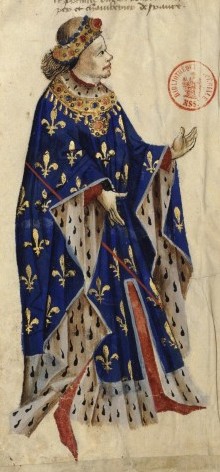
|
Robert VI d'Auvergne, né en 1250, mort en 1314.
Robert VI fut comte d'Auvergne (1280-1314) et comte de Boulogne (1280-1314), succédant dans les deux fiefs à son frère. Il était le fils de Robert V (v. 1225-1277), comte d'Auvergne (1247-1277) et comte de Boulogne (1247-1277), et d'Éléonore de Baffie.
(Ebles de VENTADOUR)
vicomte de Ventadour
- Né en 1264
- Décédé en 1339 , à l’âge de 75 ans
Parents
dame de Montpensier
Parents
- Décédé le 6 octobre 1327 julien
- Vicomte de Beaumont en Maine,Sarthe,Pays de la Loire,France, baron de Sainte-Suzanne,Mayenne,Pays de la Loire,France,
Parents
- Jean II DE BRIENNE, Vicomte de Beaumont en Maine,Sarthe,Pays de la Loire,France, baron de Sainte-Suzanne,Mayenne,Pays de la Loire,France,
Marié le 26 septembre 1265 julien avec
- Jeanne DE LA GUERCHE
|
Di Guido ( Guido I o Guidone), figlio di Luigi Gonzaga e secondo capitano del popolo di Mantova dal 1360, non si ricordano particolari atti di governo nel periodo in cui fu al potere; giunto al governo già anziano (70 anni), fu affiancato dai figli, col maggiore, Ugolino, che con ogni probabilità resse effettivamente le sorti dello stato, almeno fino all'assassinio (14 ottobre 1362) ad opera dei fratelli, Francesco e Ludovico. L'attività di Guido (fu podestà di Reggio nel 1328) fu quindi più significativa negli anni precedenti quando capitano generale era il padre, che supportò assieme ai fratelli nell'opera di governo.

Malatesta II (or III) Malatesta, best known as Guastafamiglia (Italian: "the Ruiner of the Family", c. 1299 – August 18, 1364) was an Italian condottiero and lord of Rimini.
|
Gerhard II of Holstein-Plön (1254 - 28 October 1312), nicknamed the Blind, was Count of Holstein-Plön from 1290 to 1312.

Niklot I, Count of Schwerin (1250–1323) was the ruling Count of Schwerin-Wittenburg from 1299 until his death. He was a son of Count Gunzelin III of Schwerin and his wife, Margaret of Mecklenburg
Berthold VII, Count of Henneberg-Schleusingen (nicknamed the Wise, born: 1272 in Schleusingen; died: 13 April 1340, Schleusingen) was Count of Henneberg- Schleusingen from 1284 to 1340. He was the son of Count Berthold V of Henneberg-Schleusingen (d. 1284) and his wife Sophie of Schwarzburg (d. 1279), the daughter of Count Günther VII of Schwarzburg. He was confirmed as Imperial Prince by Emperor Henry VI in 1310.
Adelheid (1268–1317), the daughter of Henry I of Hesse
Beatrice of Silesia (also known as Beatrice of Świdnica; Polish: Beatrycze Świdnicka, German: Beatrix von Schweidnitz ; 1290 – 25 August 1322), was a Polish princess member of the House of Piast in the Silesian branch of Jawor- Świdnica and by marriage Duchess of Bavaria and German Queen.
Henry V (III) of Iron ( Polish: Henryk V Żelazny; c. 1319 – after 8 April 1369), was a Duke of Żagań since 1342, from 1349 Duke of half- Głogów, and from 1363 Duke of half- Ścinawa.
Sophia of Brandenburg-Stendal (1300-1356) was a daughter of Margrave Henry I (1256–1318) and his wife Agnes of Bavaria(1276–1345).
Bernhard III, Prince of Anhalt-Bernburg (died 20 August 1348) was a German prince of the House of Ascania and ruler of the principality of Anhalt-Bernburg.
|
Juana, condesa de Rethel
Juan II de Brabante, llamado el Pacífico (27 de septiembre de 1275 - Tervuren, 27 de octubre de 1312), duque de Brabante y de Limburgo de 1294 a su muerte, fue hijo de Juan I, duque de Brabante y de Limburgo, y de Margarita de Dampierre.
Balian of Ibelin (French: Balian d'Ibelin; 1240–1302), seneschal of Cyprus, was a son of Guy of Ibelin, constable of Cyprus, and Philippa Berlais.
He married Alice of Hetumids of Lampron, daughter of Escive de Poitiers (daughter of Raymond-Roupen
Baldwin of Ibelin (French: Baudouin d'Ibelin; died 1313) was the ruling Lord of Korakou and of Vitzada.
He married Marguerite de Giblet
- Né en 1332
- Décédé en 1369 , à l’âge de 37 ans
- Conétable de Jérusalem
Parents
(Héloïse de DAMPIERRE)
Parents






Conrad I of Oldenburg ( German: Konrad I. von Oldenburg; died 1367) was the Count of Oldenburg from 1344 to 1367. He succeeded his brother, John III of Oldenburg.
Catherine of Henneberg ( German: Katharina von Henneberg ; c. 1334, Schleusingen – 15 July 1397, Meissen) was a Countess of Henneberg by birth and from 1347 by marriage Margravine of Meissen, Landgravine of Thuringia, etc. She was the wife of Margrave Frederick the Severe of Meissen. Via her, the House of Wettin inherited her father's Franconian possessions.
Catherine was the second of four daughters of Count Henry IV of Henneberg-Schleusingen and his wife Judith of Brandenburg-Salzwedel.
Enrique de Brunswick-Lüneburg (del latín Henricus, murió el 14 de octubre 1416), duque de Brunswick-Lüneburg, llamado Enrique el Apacible, fue príncipe de Lüneburgdesde 1388 a 1409, junto con su hermano Bernardo I de Brunswick-Lüneburg, desde 1400 hasta 1409 fue también príncipe de Wolfenbüttel, y desde 1409 hasta su muerte, el único príncipe de Lüneburg.
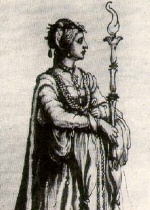
Siemowit IV ( Ziemowit IV), also known as Siemowit IV the Younger (pl: Siemowit IV Młodszy; ca. 1353/1356 [1] – 21 January 1426 [2]), was a Polish prince member of the House of Piast from the Masovian branch, from 1373/74 Duke of Rawa, and after the division of the paternal inheritance between him and his brother in 1381, ruler over Rawa, Płock, Sochaczew, Gostynin, Płońsk and Wizna, since 1386 hereditary Polish vassal, since 1388 ruler over Belz, during 1382–1401 he lost Wizna and during 1384–1399 and 1407–1411 he lost Zawkrze, during 1384–1399 he lost Płońsk, taken by the Teutonic Order.
Albert I was the eldest son of the Duke Ernest the elder of Grubenhagen and his wife, Adelheid of Eberstein. In 1359, his father made him co-ruler. After his father's death in 1361, he ruled the principality alone, except for a few possessions at Osterode and Herzberg, which he ceded to his brother Frederick. He lived alone at Salzderhelden Castle in Einbeck, which is why he was nicknamed "Duke of Salt".
His father was Ernest I (1305–1367), who assumed power in the Principality of Göttingen in 1345. After several years of co-regency in 1367, Otto took up government in this small and economically weak principality. Otto initially resided in the city of Göttingen, where he also held several large jousting tournaments. Over time, however, he had a number of disputes with the citizens of the
|
|
|
|
|
|


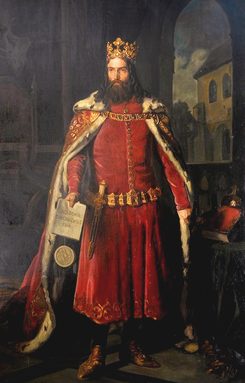


















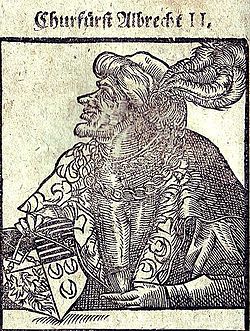



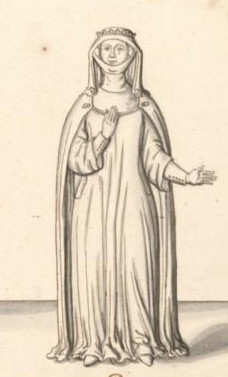









No hay comentarios:
Publicar un comentario